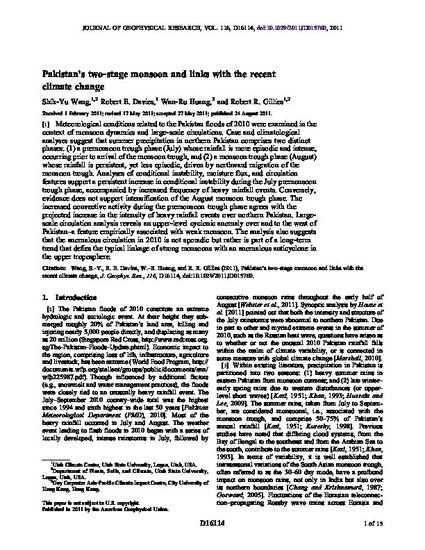
Meteorological conditions related to the Pakistan floods of 2010 were examined in the context of monsoon dynamics and large‐scale circulations. Case and climatological analyses suggest that summer precipitation in northern Pakistan comprises two distinct phases: (1) a premonsoon trough phase (July) whose rainfall is more episodic and intense, occurring prior to arrival of the monsoon trough, and (2) a monsoon trough phase (August) whose rainfall is persistent, yet less episodic, driven by northward migration of the monsoon trough. Analyses of conditional instability, moisture flux, and circulation features support a persistent increase in conditional instability during the July premonsoon trough phase, accompanied by increased frequency of heavy rainfall events. Conversely, evidence does not support intensification of the August monsoon trough phase. The increased convective activity during the premonsoon trough phase agrees with the projected increase in the intensity of heavy rainfall events over northern Pakistan. Largescale circulation analysis reveals an upper‐level cyclonic anomaly over and to the west of Pakistan–a feature empirically associated with weak monsoon. The analysis also suggests that the anomalous circulation in 2010 is not sporadic but rather is part of a long‐term trend that defies the typical linkage of strong monsoons with an anomalous anticyclone in the upper troposphere.
